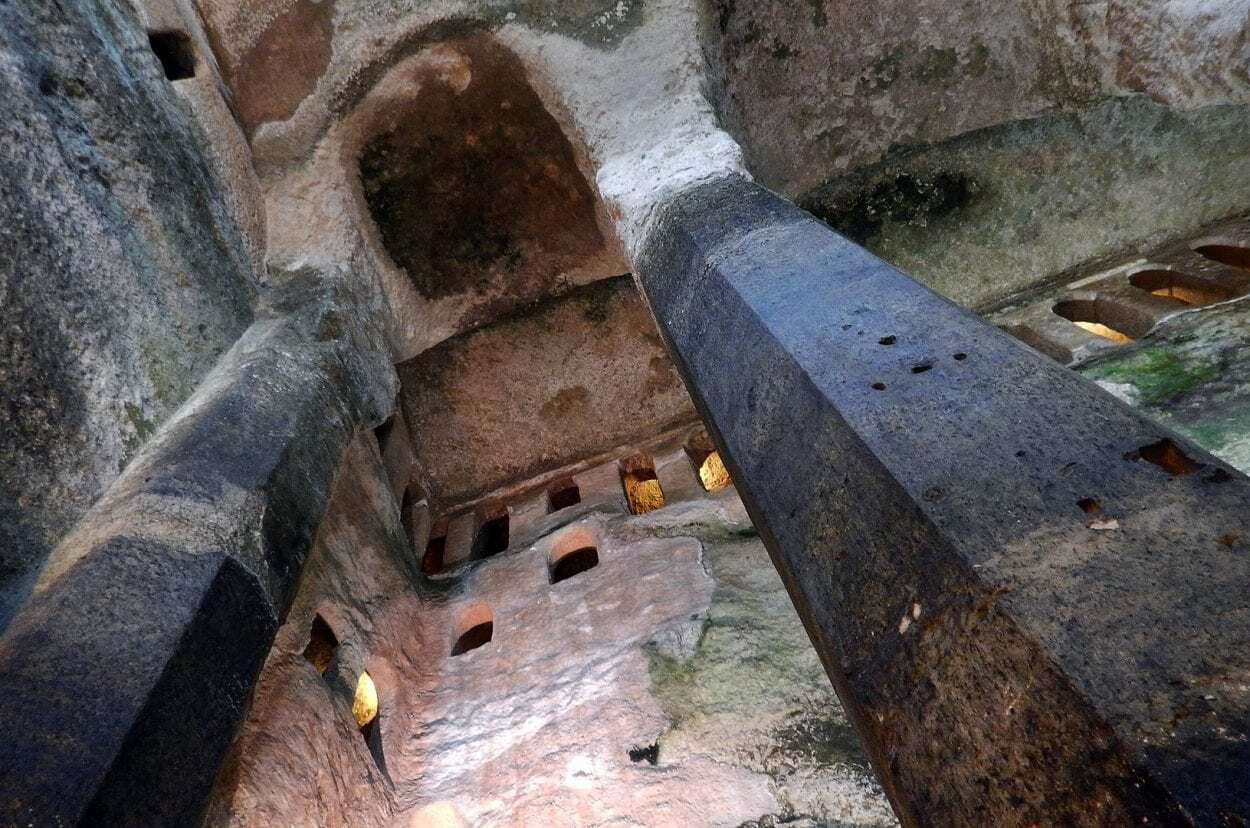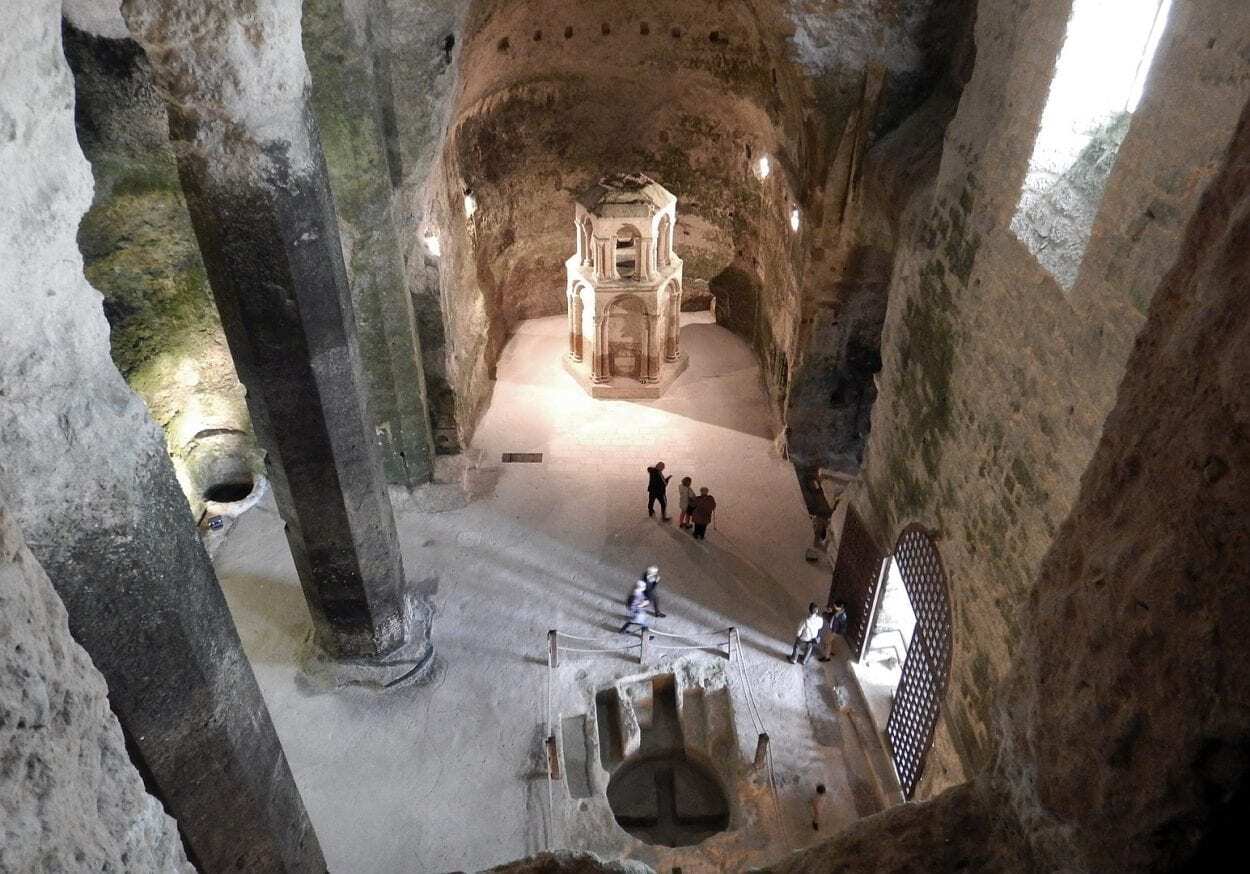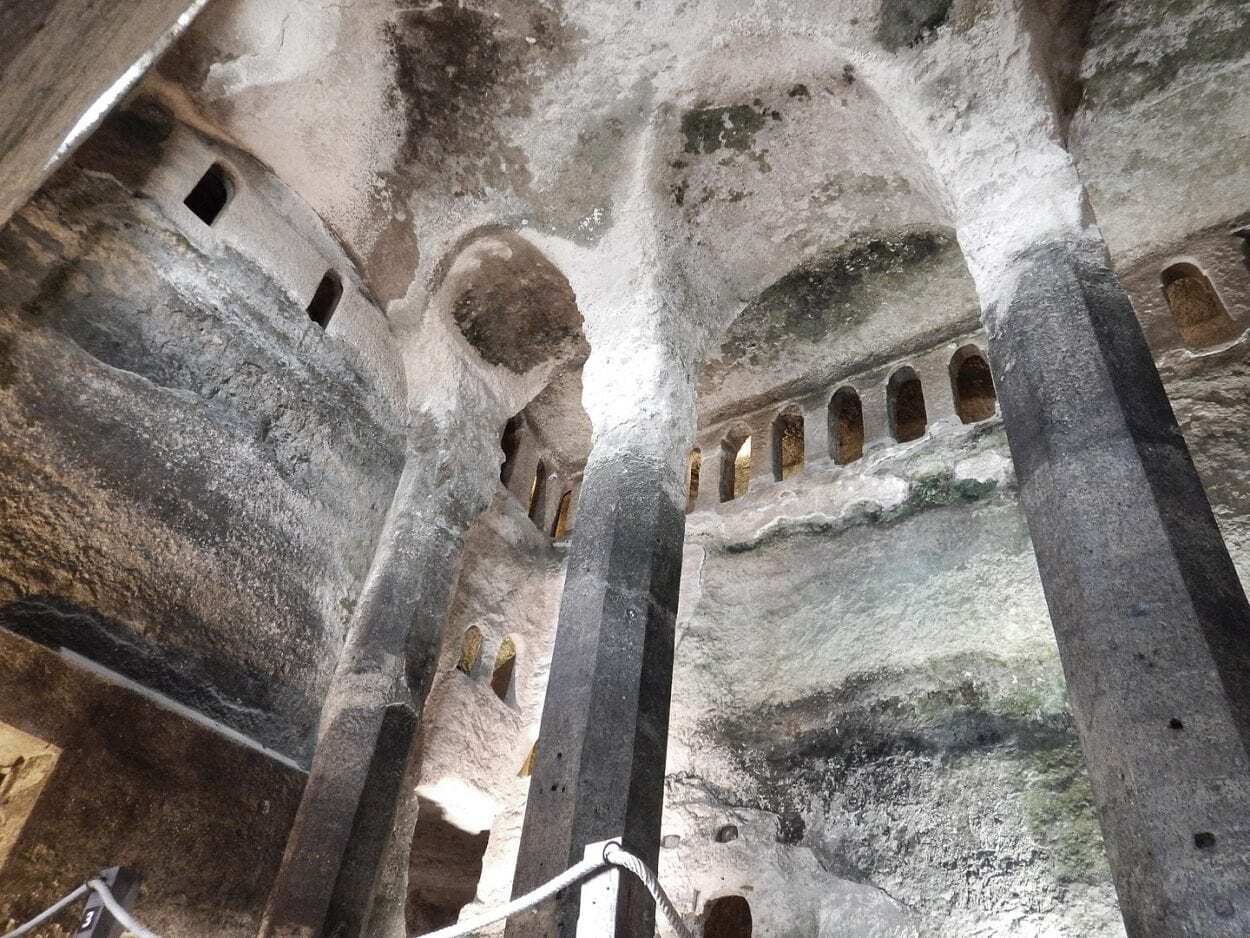The church of Saint Jean is located in Aubeterre-sur-Dronne, a commune in the Nouvelle-Aquitaine region of southwestern France.
The church was carved into a limestone cliff along the Dronne valley, overlooking Aubeterre-sur-Dronne sometime during the 8th century AD, with further expansion by Benedictine monks during the 12th century.
Despite being described as a monolithic structure, Saint Jean is not a true monolithic church but is instead a cave church, being carved from a rock face with a front opening closed by a wall.
Little is known about the early phase of construction; a large cavity was cut from the rock with a baptismal font placed in the floor of the nave, which is generally accepted to date from the 8th century, but some historians suggest an earlier date of around the 4th century during the Roman period.

During the 12th century, the church was enlarged to its present form and was named the L’église souterraine Saint Jean to house religious artifacts, possibly as a sacred reliquary for pilgrims passing along the route of the old pilgrim’s way to Santiago di Compostela in northern Spain.
It is believed that Benedictine monks (disciples of St. Maurus, the first disciple of St. Benedict of Nursia, who founded the order in 529) were responsible for the expansion, inspired by the Sepulchre in Jerusalem.

The church consists of a central nave with a 17-metre-high ceiling, an aisle separated by octagonal pillars, a stone reliquary, and two chapels. Beneath the nave is a crypt, containing a necropolis housing hundreds of stone tombs or sarcophagi.
Saint Jean remained a centre for religious worship as a parish church in Aubeterre-sur-Dronne until the outbreak of the French revolution, where it was transformed into a saltpeter (Potassium nitrate) manufacturing workshop, saltpeter being one of the major constituents of gunpowder.

After the war, the church was used as a cemetery, but the practice was abolished after a public health decree in 1865. From 1912, Saint Jean was designated a protected monument under the “Monument Historique” act.
Header Image Credit : – CC BY-SA 4.0





